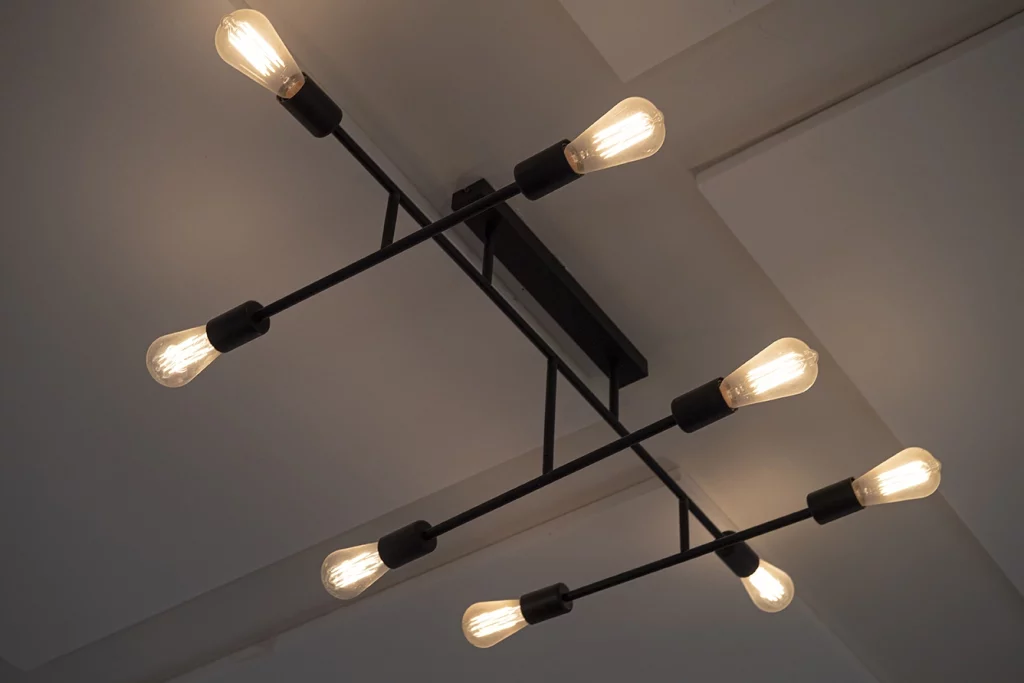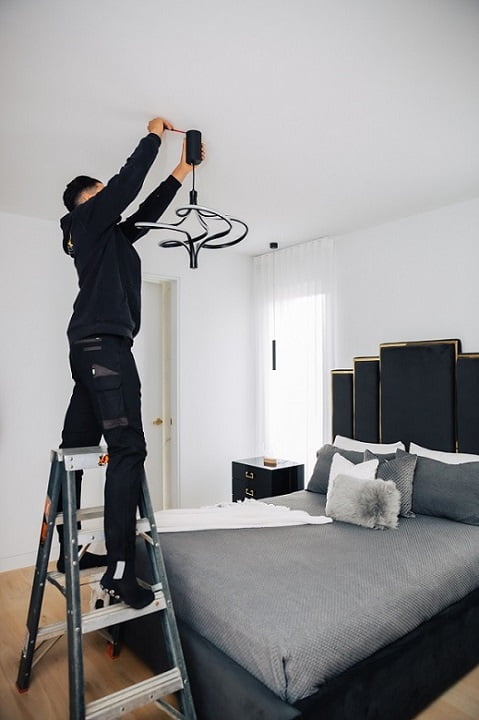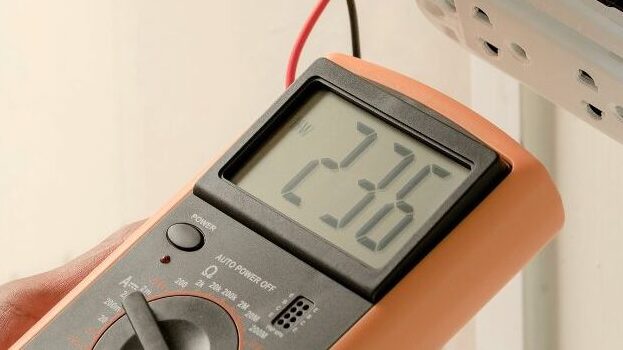Uncover the Key Reasons for Your LED Light’s Unanticipated Dimming
Quick Solution to Try:
If you observe your LED light dimming unexpectedly, it is frequently caused by a voltage issue, a circuit overload, excessive heat, poor connections, or simply low-quality LED bulbs. Read on for in-depth insights and strategies to effectively tackle this situation.
Explore the 5 Main Reasons for LED Light Dimming and Solutions to Fix Them
LED lights are celebrated for their exceptional lifespan, often promoted as lasting for years without complications. However, it can be quite disappointing when some of these lights fail to last even a single season. Whether you are dealing with downlights in your kitchen, decorative garden lights, or festive Christmas LED lights, experiencing sudden dimming can be both vexing and surprisingly common. In this exhaustive guide, we will examine the primary reasons for LED dimming and equip you with safe, effective troubleshooting techniques to restore your lighting to its optimal brightness.

1. Understanding How Voltage Drops Cause Unexpected Dimming in LED Lights
The leading cause of LED lights dimming unexpectedly is a voltage drop. When the voltage supplied to the light fixture falls below the required threshold for the LED, you will notice a distinct reduction in brightness. So, what elements contribute to this concern? Let’s take a closer look.
- Temporary interruptions in the power grid
- Local circuits experiencing overloads
- Long wiring runs using inadequate gauge cables
- Faulty switchboards or poor connections
Voltage drops can create significant challenges, especially with budget LED lights that often lack proper voltage regulation and exhibit increased sensitivity to even minor voltage fluctuations. To ensure effective solutions, always consider investing in high-quality products that can endure these issues over time.
Also Read: 10 Strategies to Reduce Power and Energy Costs
2. Identifying Overloaded Circuits in Older Homes: A Practical Guide
Overloading your electrical circuits by connecting too many devices can significantly strain your power supply. When a circuit struggles to meet demand, the voltage becomes unevenly distributed across the connected devices, leading to dimming lights, especially for sensitive LEDs. This issue is particularly prevalent in older homes constructed before modern energy-intensive devices became widespread. Indicators of overloaded circuits typically include:
- Flickering lights that can be alarming
- Buzzing sounds from switches
- Dimmed lights, particularly in affordable LEDs lacking essential protective features.
Request a Quote and Inquire About Our FREE Electrical Inspections
3. Handling Loose Connections and Damaged Wiring: Essential Steps
Inadequate power delivery can arise from loose fittings or ageing cables. If your light flickers or dims when you manipulate a switch or device, it may indicate loose connections. Here are some critical areas to examine for safety:
- Ensure the bulb is properly seated in the socket
- Monitor for flickering when adjusting the wall switch
- Look for burn marks, discoloration, or strange buzzing sounds
Important: Many low-cost LED lights use thin or substandard internal wiring, making them more prone to failure due to heat or movement. Regular inspections and maintenance can be crucial in preventing unexpected issues from occurring.
Also Read: Ensure Your Pets Are Safe Around Electricity
4. Understanding the Risks of Overheating in LED Lights
While LEDs generate significantly less heat than incandescent bulbs, they still require effective heat dissipation. If an LED overheats, it will automatically dim to protect itself from damage. Overheating can occur due to various factors:
- Enclosed light fixtures that hinder airflow
- Defective heat sinks, particularly in budget models
- Excessively high ambient temperatures
- Inadequate air circulation around the fixture
If your LED housing feels hot to the touch, it likely suffers from overheating. This issue is particularly common with inexpensive, poorly ventilated LED downlights or garden lights installed in direct sunlight without suitable thermal protection.

5. Lumen Depreciation: The Hidden Cause of Dimming in LEDs Over Time
Even high-quality LEDs will progressively lose brightness with extensive use, a phenomenon referred to as lumen depreciation. Quality LEDs can retain approximately 70% to 90% of their brightness after around 50,000 hours of use. In contrast, cheap LED products may begin to dim after merely 5,000 to 10,000 hours, often doing so unevenly. If your light seems to be:
- A budget model, it may simply be nearing the end of its intended lifespan.
- Several years old and frequently in use
- Experiencing frequent operation
Why Do Budget LED Lights Fail Prematurely? Insights and Alternatives
During festive periods, inexpensive LED lights inundate the market, available in various forms such as string lights, downlights, garden decorations, and more. The potential drawbacks associated with these products include:
- Inconsistent voltage tolerance: rendering them susceptible to dimming and flickering
- Poor heat management: heightening the risk of overheating
- Substandard drivers: which cannot effectively regulate electrical current
- Lack of weatherproofing: making them unsuitable for outdoor applications
Holiday Tip: When purchasing LED Christmas lights, look for products that feature:
- IP65+ waterproof rating
- Compliance with certification marks (e.g., RCM)
- Reputable brands (avoid lesser-known bargain brands)
While choosing cheaper lights may seem like a cost-saving measure initially, they can lead to increased expenses in terms of replacements, safety, and long-term frustration.
Proven Strategies to Fix Dim LED Lights
Thoroughly Inspect for Loose Connections and Signs of Overheating
Start by meticulously examining your light fixture. Is the bulb tightly secured? Are there any visible signs of fraying, corrosion, or damage? If you notice anything unusual, do not attempt to repair it yourself, especially if wires are exposed or if the fixture appears burnt or melted. Carefully touch the fixture; if it feels excessively hot—think “it-could-cook-an-egg” hot—that is a significant warning sign. Overheating fixtures present serious hazards and often require replacement.
Need help? We are Beacon Lighting Recommended Electricians, and installing and replacing LED fittings is our area of expertise. Whether you’re located in Braybrook, Yarraville, or nearby, Electrx can resolve the issue safely and promptly.
Utilise a Multimeter to Measure Voltage Levels Accurately
If your LED is dim due to low voltage, employing a multimeter will assist in identifying the problem. Testing the voltage at your LED fixture will reveal whether your lights are receiving the appropriate power supply. Compare the measured voltage with the recommended voltage for your specific LED lights. If the voltage is lower than required, this may clarify the dimming. If the voltage consistently falls short, you may be dealing with a more significant electrical issue and should reach out to a qualified electrician for further examination.
If you discover low voltage across multiple fittings, there is likely a larger wiring or switchboard issue at play.

Evaluate the Dimmer Switch Settings for Compatibility Issues
We frequently receive queries like this:
“Why is my light dim?”
Us: “Do you have a dimmer switch?”
Them: “…oh.”
Ensure that no accidental adjustments have been made to the dimmer, or check for compatibility issues with your LED model, as this can frequently lead to unexpected dimming.
Test the Circuit by Turning Off Other Appliances Connected
Try switching off other devices connected to the same circuit as your LED lights. If your lights become brighter, you are likely facing an overloaded circuit. Consider implementing the following strategies:
- Redistributing devices to alternate circuits to balance the load
- Upgrading your switchboard for improved performance
- Replacing budget LEDs with more efficient models to ensure longevity and reliability
Also Read: Electrical Upgrades For Your Office
Replace the LED Bulb if Necessary to Restore Full Brightness
If none of these solutions rectify the issue, your LED may simply be nearing the end of its operational lifespan. Test by swapping it out with another LED bulb from your home. If the replacement bulb restores full brightness, the old bulb was likely due for retirement. In that case, proceed to purchase a new LED bulb. However, if changing bulbs does not resolve the issue, the underlying cause likely lies elsewhere, necessitating further investigation.
Essential Insights into LED Dimming Issues
So, why did your LED light suddenly dim? The potential culprits could include:
- Voltage drops negatively impacting performance
- Loose connections disrupting the flow of power
- Heat accumulation compromising functionality
- Circuit overload due to excessive devices being connected
- Or the LED itself—particularly if it is a budget model
With this guide, you are now equipped with the knowledge of what to examine—and how to effectively rectify the situation.
However, if you are uncertain or notice any signs of damage, never compromise on electrical safety.
Allow Electrx to Provide Professional Support for Your Lighting Challenges
We are licensed electricians and recognised installers for Beacon Lighting. Our services include:
- Testing and replacement of LEDs to ensure safety and efficiency
- Circuit diagnosis to accurately pinpoint and resolve electrical issues
- Solutions for overload and overheating challenges in your home
- Safe, long-lasting electrical upgrades tailored to your specific needs
If you have any uncertainties regarding electrical matters, it is always wise to consult a professional electrician, such as Electrx Electricians. Contact us today for expert assistance and dependable service.

Frequently Asked Questions About LED Lighting Troubleshooting
Q: Why is my new LED bulb already dim?
A: This may be due to a voltage drop, faulty wiring, or a low-quality LED lacking adequate voltage regulation. Consider replacing it with a high-quality LED first to determine if that resolves the issue.
Q: Do inexpensive LED lights experience dimming more rapidly than higher-quality options?
A: Absolutely. Budget LEDs often lack sufficient heat sinks and stable drivers, resulting in premature lumen loss, flickering, and dimming—especially in hot or outdoor environments.
Q: Why do my Christmas lights flicker and fade over time?
A: Seasonal LED string lights are often produced using lower-grade components. Environmental exposure, overuse, and power surges can all contribute to dimming. Always choose outdoor-rated, certified lighting to ensure durability and performance.
Q: Can I troubleshoot dimming LED lights on my own?
A: You can perform some troubleshooting by checking fittings, testing voltage levels, and replacing bulbs. However, if the issue persists—especially across multiple fittings—contact a licensed electrician for professional assistance to ensure your safety.
The Article: LED Light Dim? Discover the Reasons Behind It first appeared on https://writebuff.com
The Article LED Light Dim: Uncover the Causes of Dimming Issues Was Found On https://limitsofstrategy.com



